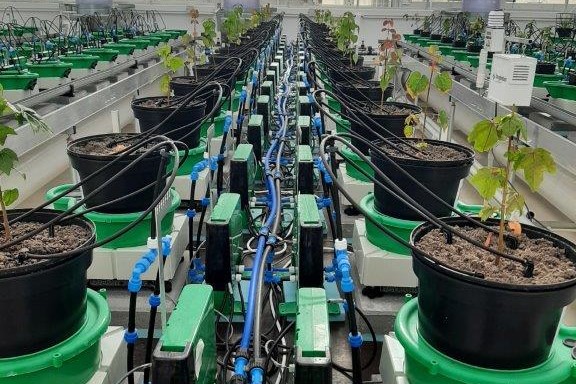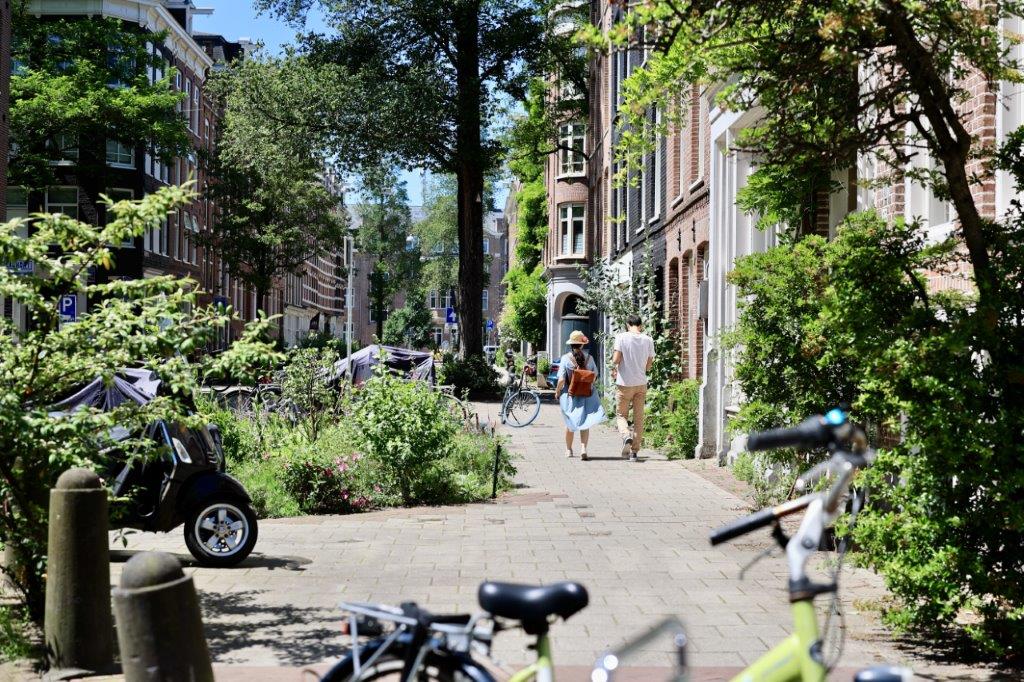Advancing Climate-Resilient Urban Trees: A Continuing Quest
Urban trees struggle to cope with hot summers, long periods of drought and extreme downpours. Marc Ravesloot, senior research associate in agrosystems, is embarking on a project with his research team to test and classify plants on a large scale. The aim is to come up with a list of climate-resilient trees that can tolerate the effects of climate change. As we move towards a hotter, drier future, this will help growers and municipal councils plant the right trees in the right places.
“I’ve just come back from holiday in Austria. We drove back through rural Germany, and couldn’t believe what we were seeing. Lots of dead wood, small leaf blades, crowns so sparse you could see right through them. It looks shocking.”
Marc Ravesloot has long been aware that the profound effects of climate change are now evident all around us, and no longer just in computer models. Drought and heat are having visible impacts on native and non-native trees across Europe. They’re not growing as they used too, they’re getting leaf and bark scorch, and trees are dying off at a higher rate. The changing climate also makes trees more vulnerable to diseases and pests, because they’re less able to regulate leaf temperature. These problems are even more extreme in cities, where temperatures are on average 4 to 5 degrees higher than in rural environments. In urban settings, the higher temperature intensifies the vapour-pressure deficit – the air’s capacity to absorb moisture – during the tree growth season.
These worrying developments mean that urban trees are increasingly unable to deliver ecosystem services. They provide less shade and cooling, they retain less water during downpours, they capture less particulate matter, and they fail to store as much CO2 as they otherwise could. These are all qualities that, ironically, are actually becoming increasingly important in cities as a way of mitigating the effects of climate change. Climate adaptation requires green cities with robust and resilient trees.

It’s clearly very important for urban trees to be climate resilient. Yet relatively little is still known about which trees flourish under which conditions. “We sometimes still work with literature studies from the 1950s or the 1970s. Those studies will have been carried out in different parts of the world, using different methodologies and by different researchers,” says Ravesloot. “As a result, researchers, tree growers and arboriculturalists currently tend rely on their gut feeling and experience, and basically come up with a best guess. The results of those guesses can be quite disappointing. Hornbeams, for example, were always said to be drought-tolerant. But quite often when you see those trees now, the loss of vitality is striking.”
Tree managers currently often rely on their gut feeling and experience
In 2022, Ravesloot launched the CSI Trees: future proof trees project. He and his research team are setting out to find climate-resilient trees. “If we significantly improve our measurements and match those with classifications, we’ll get empirically determined values that can be compared to each other.” The team will be exposing lots of tree species to different types of stresses related to climate change: heat stress, drought stress, salt stress and temporary inundation (excess water). These types of stress may also be combined. Researchers will measure the physiological responses of the plants and then remove the stress to see if the plants return to their previous levels.
NPEC
These measurements will take place from 2024 on Wageningen Campus, at the state-of-the-art Netherlands Plant Eco-phenotyping Centre (NPEC). The NPEC greenhouse is home to thousands of plants in cabinets featuring high-tech equipment such as measuring tables, camera systems and sensors. This equipment enables the greenhouse to analyse all kinds of plant properties quickly, carefully and automatically. “You place the plants on it, and within four weeks you have a dataset that enables you to determine things like water use efficiency and the critical wilting point. You would normally need very expensive field trials for this kind of research, and it would then be years before you could determine the effects,” says Ravesloot.
The Wageningen researchers will link the data from the greenhouse to studies in the urban environment. Ten municipal councils are participating in the preliminary research being carried out by CSI Trees, and between them they include the Netherlands’ four major cities (Amsterdam, Rotterdam, The Hague and Utrecht). The project is also partnering with the Hebrew University of Jerusalem, which has extensive experience in crop drought tolerance research and in using the latest technology for phenotyping. The Hebrew University previously developed a new variety of tomato plant, for example, which was able to continue yielding tomatoes even under stressful conditions.
Predicting the future
Ravesloot’s research team has a clear goal in mind: a list of tree species indicating which ones are particularly suitable for growing in specific locations. Based on that list, growers will soon know which plants to grow, and municipal councils will know which ones to order. The selection of a climate-resilient tree also needs to take local conditions into account. “If the municipality of Den Bosch says that a certain neighbourhood is particularly wet, we’ll already know through phenotyping exactly which tree species would immediately rot there and which can more easily withstand those conditions.”
Based on those predictions, we can identify the tree species and seeds that have evolved to cope with such conditions
But we’re not there yet: CSI Trees is still in its preliminary phase. This phase includes researching the conditions that the ideal city trees should be resilient to in the future. The research team has studied how climate conditions in Dutch cities are expected to evolve. The researchers have also developed maps showing how cold it might get in a given zone in 2050 and 2085. “Based on those predictions, we can identify the tree species and seeds that have evolved to cope with such conditions.”
Proactive
The ecological index produced by WUR colleague Wieger Wamelink is helping Ravesloot do this. Wamelink’s index is a record of the minimum and maximum temperatures that thousands of plant species are known to experience in their natural habitats. For example, the index tells us that cities are already relatively hot environments for the common oak tree. “That species is likely to experience even more stress as urban climates heat up further. The Hungarian oak, on the other hand, is comfortable with higher temperatures,” says Ravesloot.

CSI Trees aims to develop a long-term vision through the study, says Ravesloot. “CSI Trees is pre-active and proactive. We’re pre-active because we are trying to predict the future. The climate is changing, and we need to start responding to that now. And we’re proactive because we’re going to create a new future for arboriculture based on those predictions.” Trees are the backbone of urban greenery, Ravesloot reiterates. “We have to adapt right now because we’re in the midst of a big change that we’re unlikely to be able to reverse. You only have to take a look outside to see that.”

